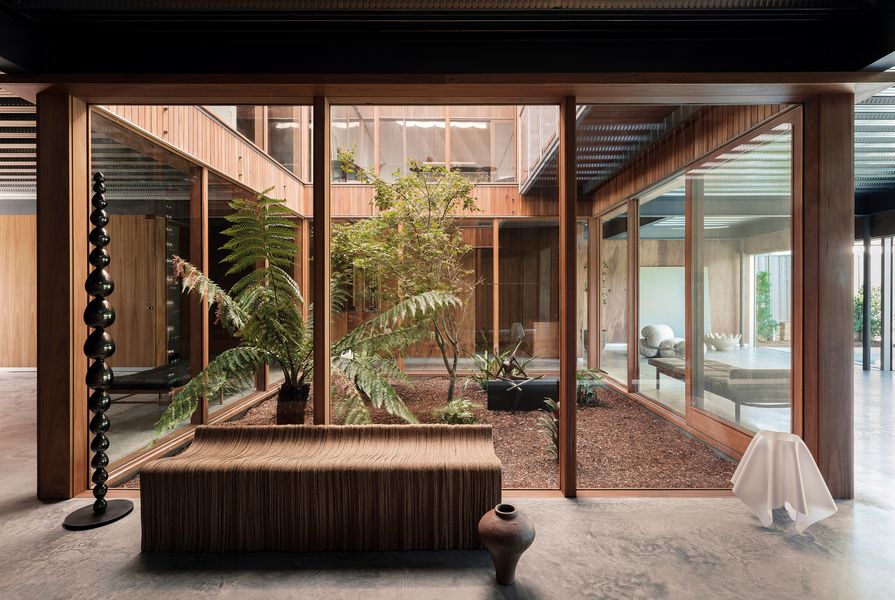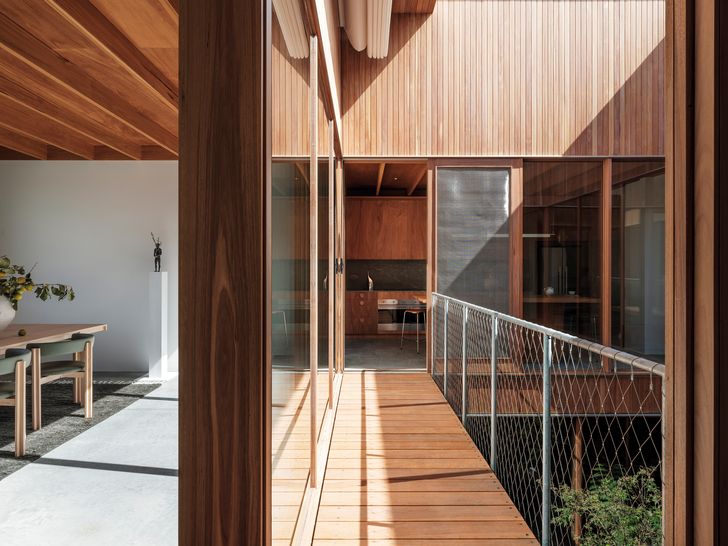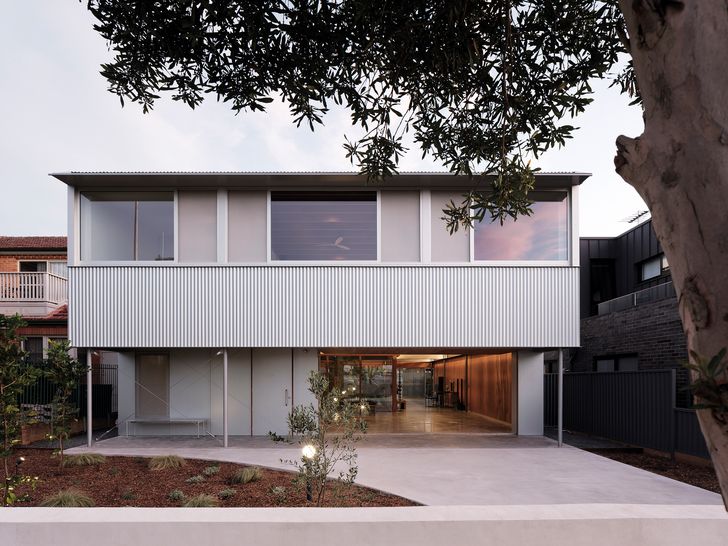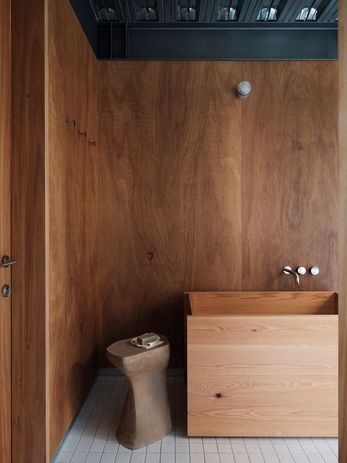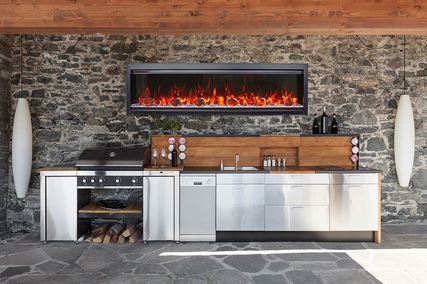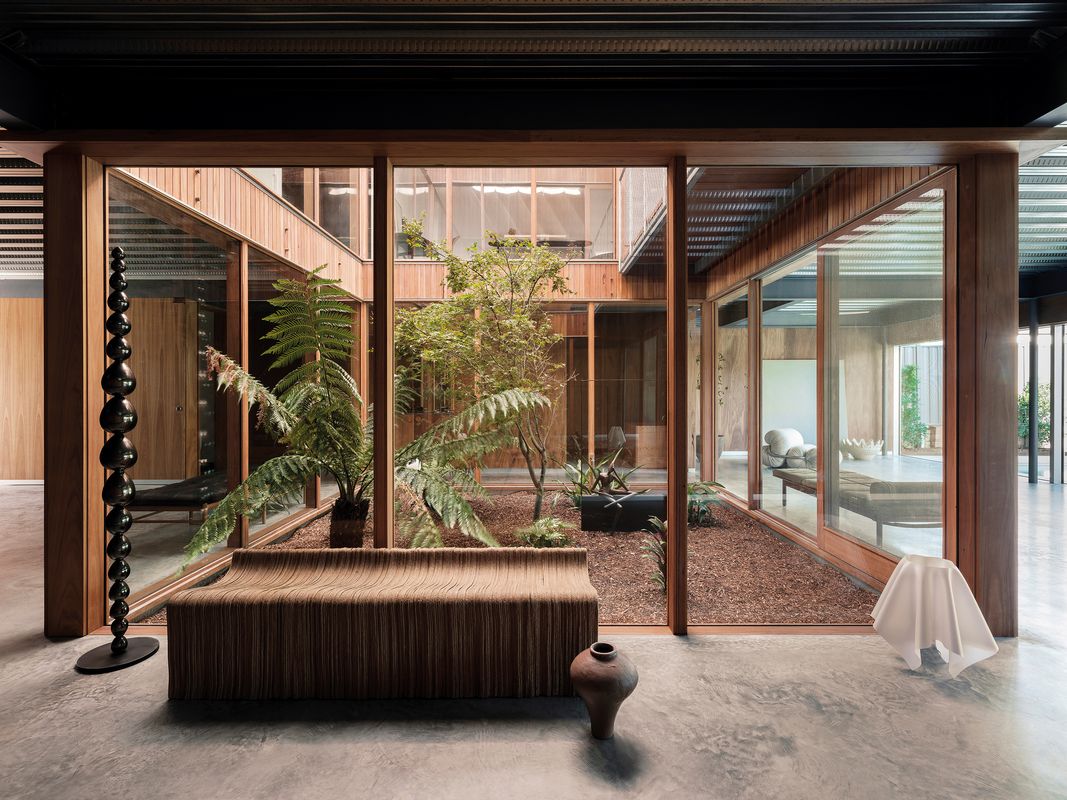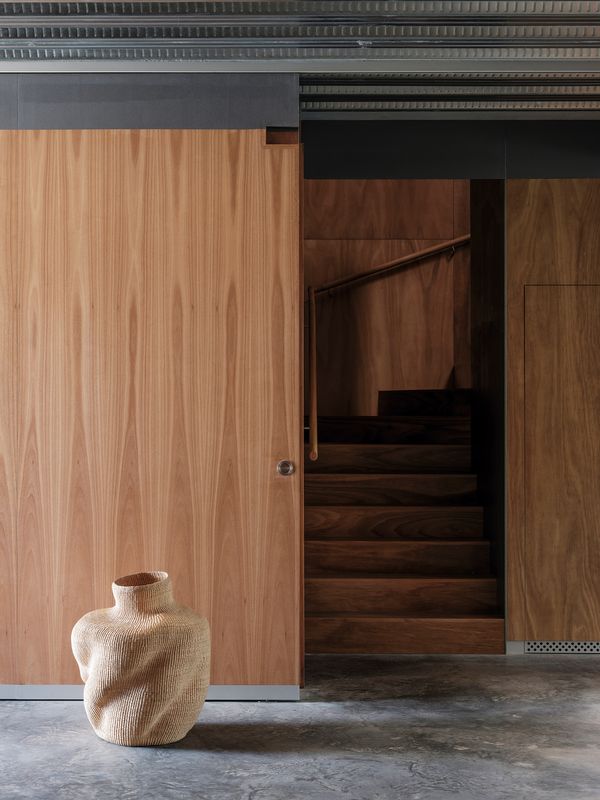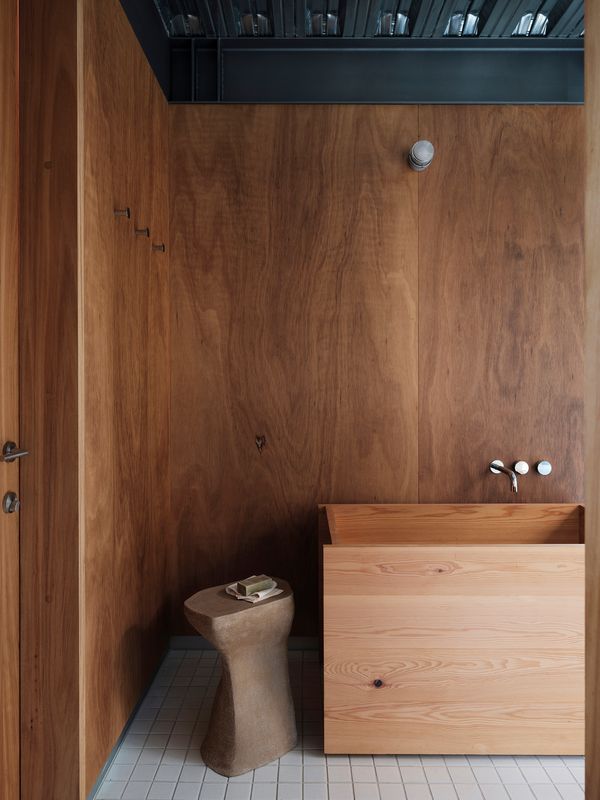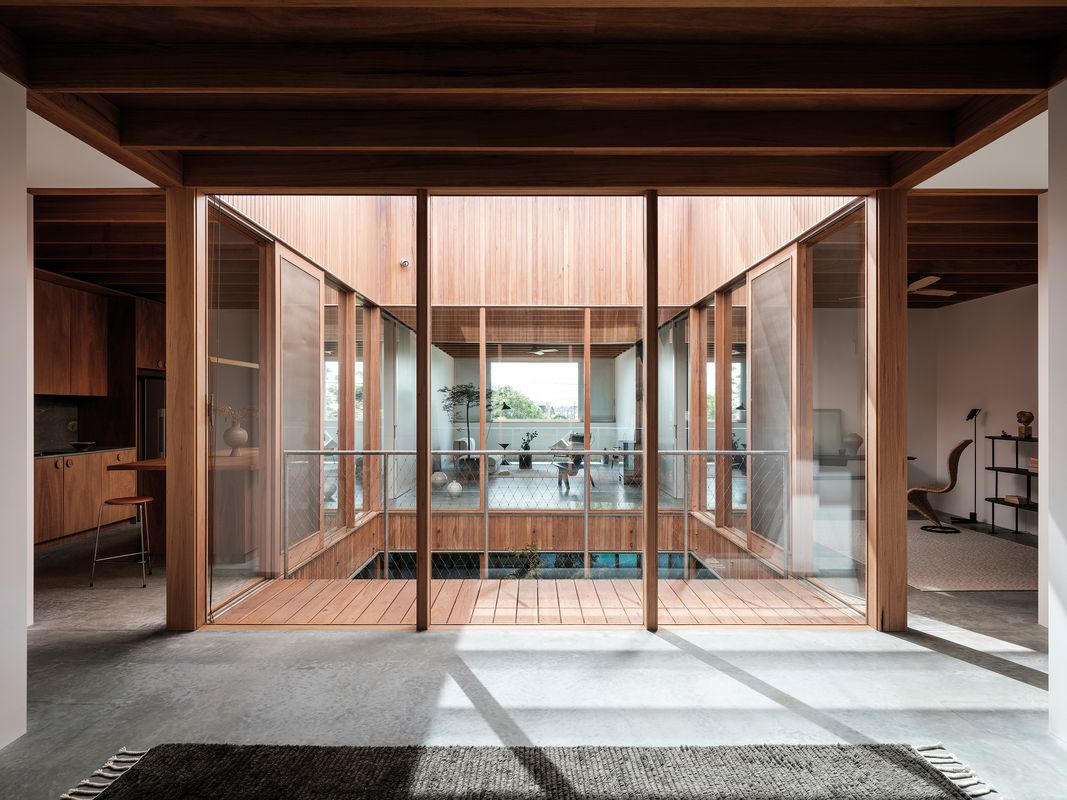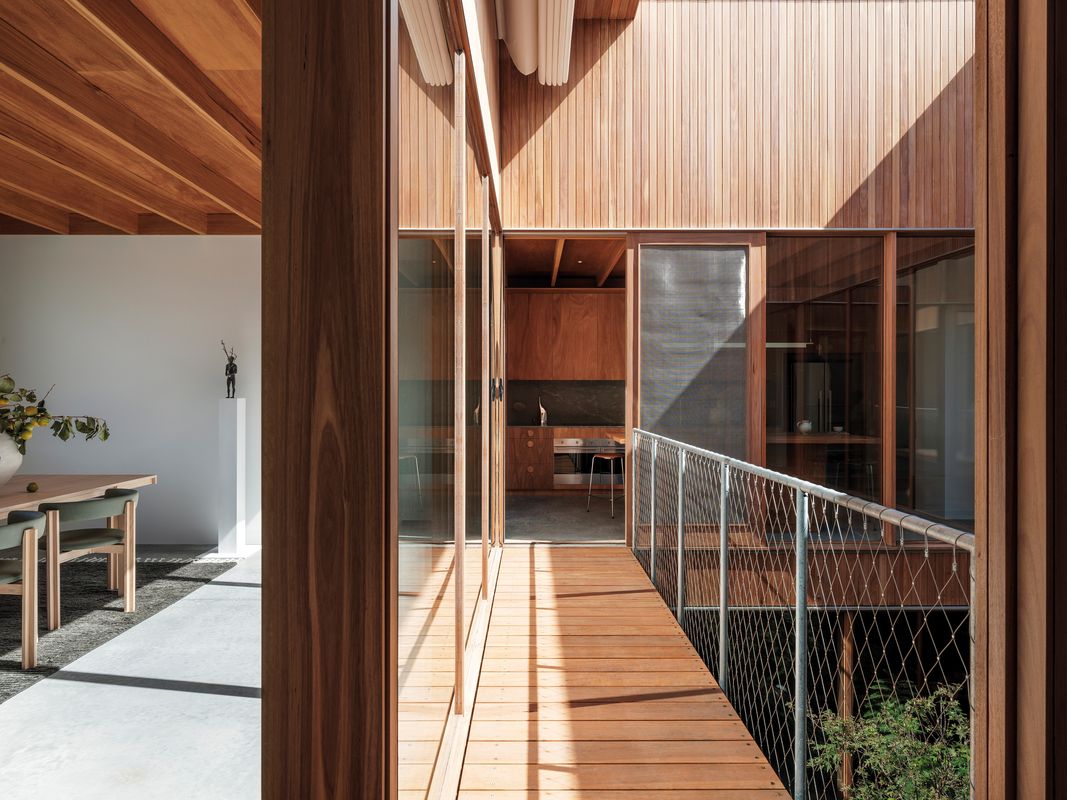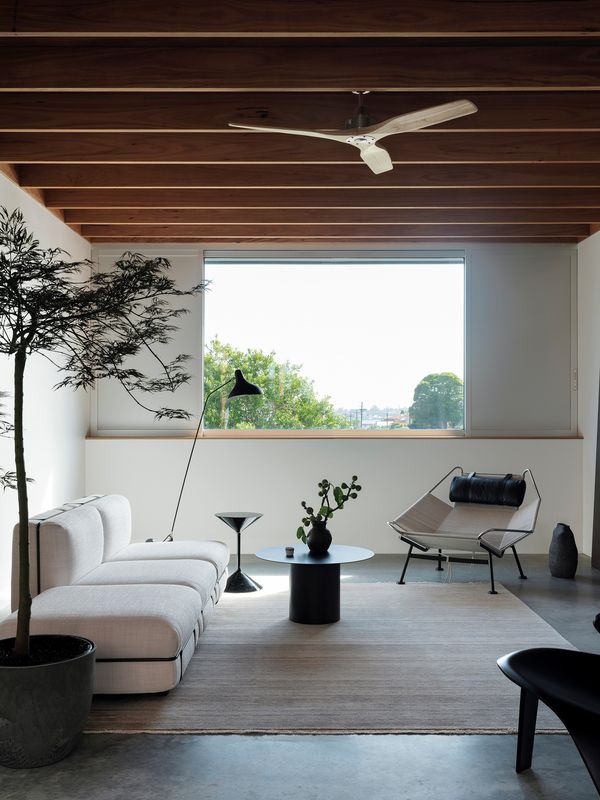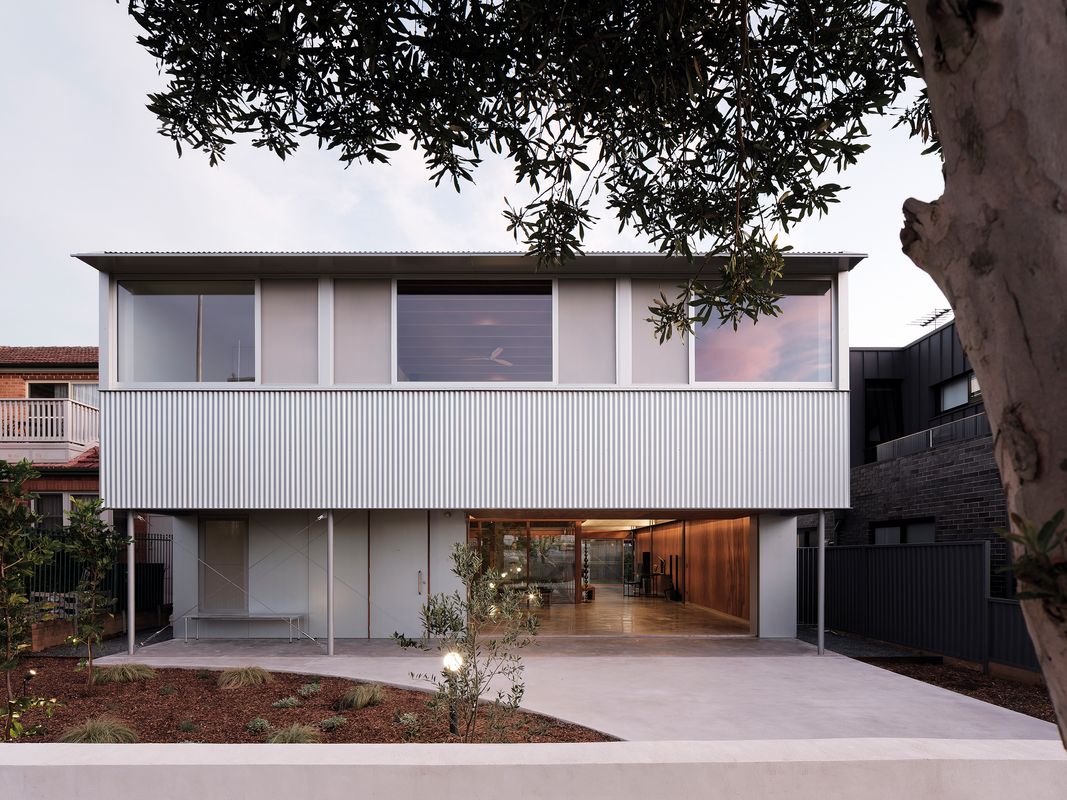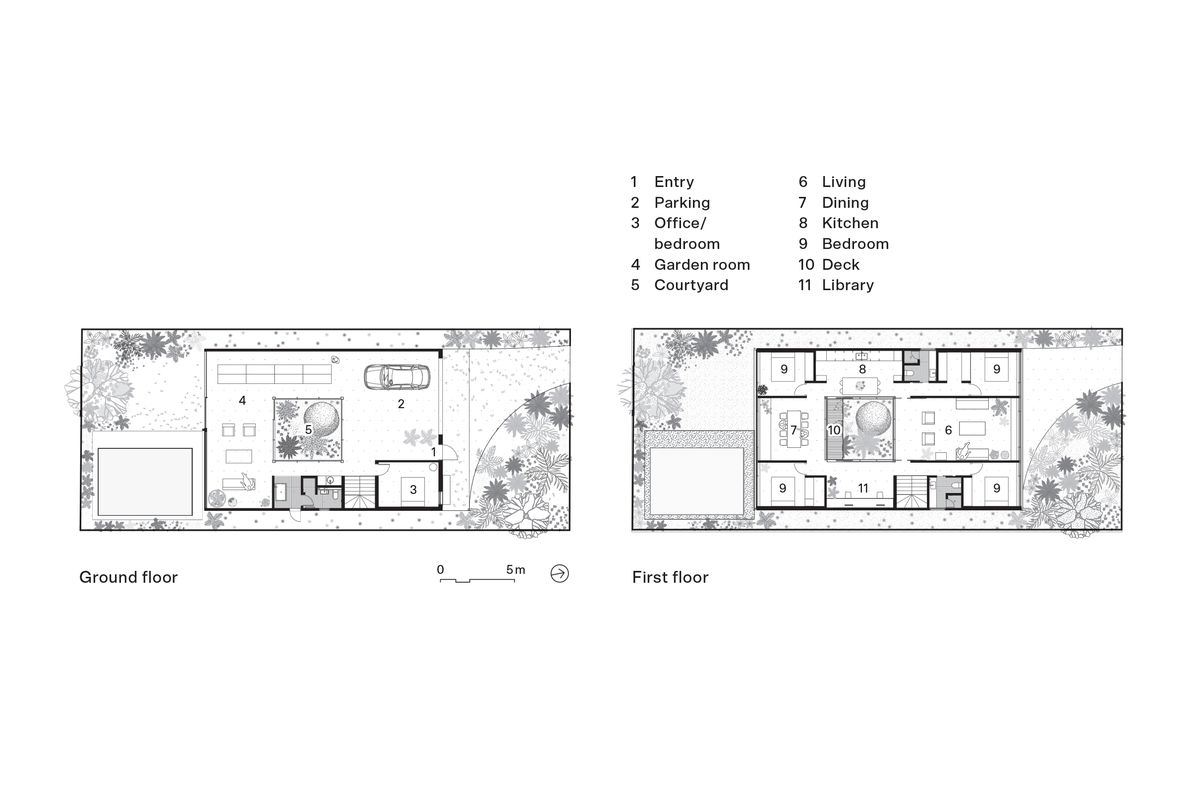Earlwood is affectionately known by many locals as a hidden gem. The suburb is located a mere 10 kilometres south-west of central Sydney and is bordered by several waterways that feed into Botany Bay, lending it an almost island-like quality. Earlwood stands apart from the high property prices and limited space of nearby hipster suburbs such as Dulwich Hill and Marrickville, and it also escapes the consistently onerous heritage and development controls demanded by many of the inner-city councils.
The owners of Shed House, a family of five comprising two furniture makers and their three children, initiated a conversation with Breakspear Architects after discovering and deeply admiring an earlier house executed by the same practice in a nearby suburb. That project, aptly named Courted House, contains a rigorous band of rooms that internalizes a garden to create a hidden little oasis for its occupants. Inspired by this remarkable achievement, the owners sought to capture a similar essence in their own dwelling.
First-floor living spaces are arranged around a private garden courtyard. Sculpture: Raffaella Benetti.
Image: Tom Ferguson
In response, Breakspear Architects reflected on the renowned Beachcomber houses that are scattered throughout New South Wales. This project home model was designed by Croatian-born architect Nino Sydney for Lend Lease Homes in the 1960s, and its compact format provided an innovative, Bauhaus-inspired approach to affordable housing (see Revisited, Houses 150). Notably, the Beachcomber elevated living spaces above ground level, liberating the ground plane – a concept reminiscent of Le Corbusier’s iconic Villa Savoye (1928). Embracing these architectural precedents, Breakspear Architects has employed a similar strategy in the design of Shed House. The design team has elevated the primary living spaces, including the kitchen and all the bedrooms. This clever manoeuvre has allowed the ground floor to become a flexible space that can support a diverse range of activities and uses. Sheltered and adaptable, it can be an extension of the workshop; a zone in which to study, accommodate guests or host parties; or a place to do laundry or park cars. The space is an amalgamation of industrial and domestic details.
The design adheres to the strict rules of complying development – a set of non-negotiable controls that allows owners to obtain fast-track development approval – and the result is a surprising and refreshing one. The street elevation is unassuming, and its minimal material selection, free of any decoration along the facade, gives little insight into what may lie beyond the front door.
A tough outer skin of aluminium and steel envelops a timber-wrapped interior realm.
Image: Tom Ferguson
The entire house is enveloped in a consistent cladding of Zincalume steel, skilfully applied in various finishes that range from a distinctive corrugated profile to elegant flat-plate panels. Although Zincalume steel is a commonplace material in Australia, at Shed House it takes on an ethereal quality, reflecting and bouncing light in a captivating and restorative manner. This effect is not limited to the cladding: external windows and flyscreens are meticulously detailed with anodized aluminium sections, an item common to domestic construction, but executed here with remarkable precision.
The rugged and glossy exterior gives way to an inviting interior. A warm ambience envelops the entire ground floor, which is adorned with carefully crafted hardwood plywood panels, each one lovingly oiled by the clients. The central courtyard garden takes centre stage, embraced by substantial timber-framed double-glazed windows and accentuated by timber cladding on the walls above.
Timber continues on the ceiling upstairs, where it is paired with white plasterboard walls and burnished concrete floors. The kitchen and bathrooms are also minimal and utilitarian, comprising ceramic Japanese tiles used in a singular manner and the same hardwood panelling, ensuring that warmth pervades the entirety of the house.
The ground-floor bathroom contains a custom timber bath. Side table: Tanika Jellis.
Image: Tom Ferguson
In a departure from Courted House, where the rooms and the building framed the internal garden, at Shed House the concept has been ingeniously flipped. Here, the internal garden defines the surrounding rooms. Every space, whether upstairs or downstairs, establishes a unique connection with the courtyard. The controlled access to the internal courtyard fosters a sense of both proximity and separation between rooms, reminiscent of the intimate coexistence experienced in a densely populated urban environ-ment, such as an overlooked New York apartment. It allows the home’s occupants to enjoy their own individual spaces while remaining interconnected, basking in shared sunlight and view. In this sense, Shed House serves as yet another powerful reminder of the significance of gardens in residential design.
The interstitial and unbuilt spaces within a home, such as gardens, hold tremendous importance, transcending the mere physical necessity of being surrounded by nature. Shed House beautifully illustrates this connection between a house and its garden. It highlights how the garden serves as an indisp- ensable element, enriching the living experience and enhancing the overall ambience of the home, whether the occupants are immersed in it, or enjoying it from the sanctuary of their own interior realm.
Products and materials
- Roofing
- Lysaght Custom Orb in ‘First Light’
- External walls
- Lysaght corrugated Zincalume steel sheeting
- Internal walls
- Blackbutt timber Armourpanel by Big River Group in clear oil finish; Kingflor KF70 exposed steel rib soffit by Fielders
- Windows
- Double glazing with anodized aluminium frames by AWS in clear finish
- Doors
- Custom blackbutt timber doors by H2 Custom Joinery in clear oil; custom tilt-up Zincalume facade panels by Smartech
- Flooring
- Lightly honed concrete
- Lighting
- Easy Kap downlight and Kirk 2 external spotlight by Flos from Euroluce; Mini Lampe de Marseille by Nemo; Compendium suspension by Luceplan
- Kitchen
- Joinery by Luke Geercke Cabinet Makers in blackbutt timber Armourply by Big River Group; Fisher and Paykel black glass induction cooktop; Smeg black glass oven with stainless steel surround; Bosch integrated dishwasher; Qasair stainless steel integrated rangehood
- Bathroom
- Glazed ceramic tiles by Nagoya Mosaic-Tile Co from Academy Tiles; Milli Pure fittings in ‘Chrome’; custom timber bath by A. M. Custom Builders
- Heating and cooling
- Hydronic underfloor heating by Progressive Energy Systems
- Other
- Custom items by owner (pool fence, joinery handles, dining pendant, entry bench, bathroom cabinets); Cult living room furniture; Dimitri Vargas lounge chair and side table; Tanika Jellis side table (next to bath); Gallery Sally Dan-Cuthbert stools (bedroom and kitchen); Domo coffee table; Spence and Lyda bench; Armadillo rugs
Credits
- Project
- Shed House
- Architect
-
Breakspear Architects
- Project Team
- Toby Breakspear, Alberto Quizon
- Consultants
-
Builder
A. M. Custom Builders
ESD consultant Aspire Sustainability Consulting
Engineer Cantilever
Landscape architect Paterson Design Studio
Rainwater consultant In-Line Hydraulic Services
Stylist Tess Thyregod
- Aboriginal Nation
- Shed House is built on the land of the Wangal, Bedigal and Kameygal people of the Eora nation.
- Site Details
-
Location
Sydney,
Vic,
Australia
Site area 485 m2
Building area 305 m2
- Project Details
-
Status
Built
Completion date 2022
Design, documentation 12 months
Construction 15 months
Category Residential
Type New houses
Source
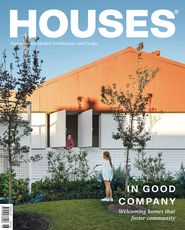
Project
Published online: 15 Dec 2023
Words:
Anthony St John Parsons
Images:
Breakspear Architects,
Tom Ferguson
Issue
Houses, December 2023

